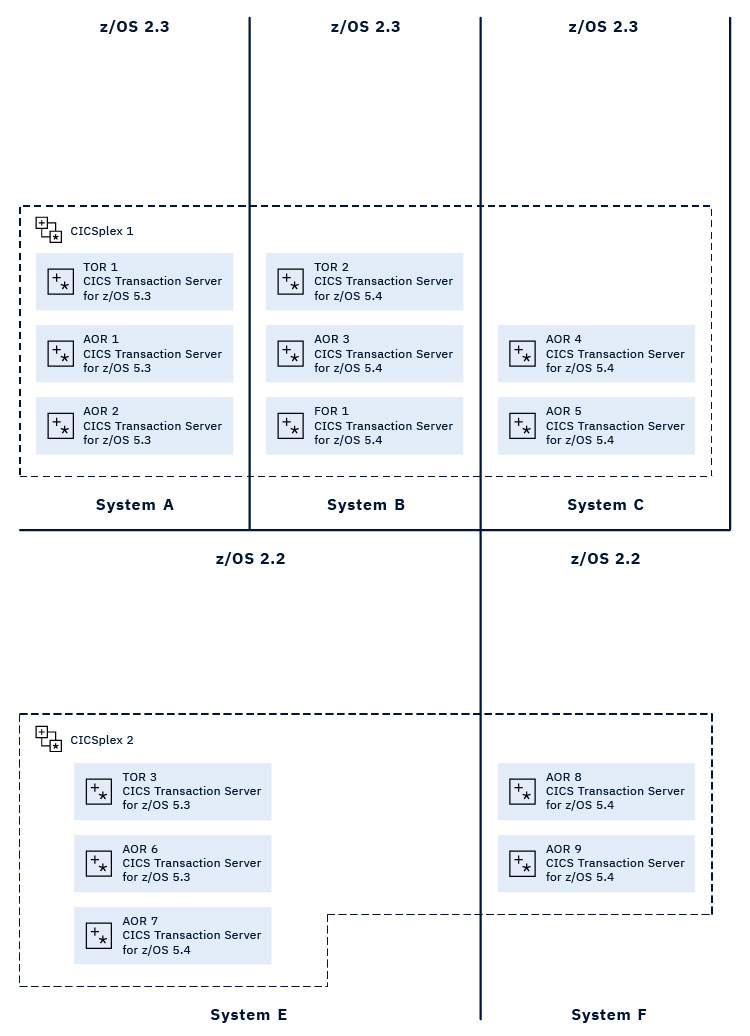Identifying system groups
You can identify one or more subsets of the CICS systems within a CICSplex as a CICS system group, which can be manipulated as a single entity and independently of the rest of CICSplex.
For example, if you define a CICSplex made up of TOR, AOR, and FOR CICS® systems, you might want to define the AORs as a CICS system group, so that you can use a single CICSPlex® SM command to make changes to, or request data from, all CICS systems in that category.
- Particularly heavily loaded CICS systems
- CICS systems that have different security requirements from the other CICS systems in the CICSplex
- CICS systems in which particular applications run
CICS system groups, unlike CICSplexes, do not have to be mutually exclusive: a CICS system can belong to any number of groups in a CICSplex. However, because the CICS system group is a subset of the CICSplex, a system group cannot cross CICSplex boundaries.
- CICSplex 1
- Group 1: TOR 1 and TOR 2
- Group 2: AOR 1 through AOR 5
- Group 3: FOR 1
- Group 4: All CICS systems on System A
- Group 5: All CICS systems on System B
- Group 6: All CICS systems on System C
- Group 7: Group 4 and Group 5
- Group 8: All CICS systems in CICSplex 1
- CICSplex 2
- Group 1: TOR 3
- Group 2: AOR 6 through AOR 9
- Group 4: All CICS systems on System E
- Group 5: All CICS systems on System F
- Group 6: Group 4 and Group 5
- Group 7: All CICS systems in CICSplex 2
Notice that Group 7 in CICSplex 1 and Group 6 in CICSplex 2 comprise of other groups. Defining groups within groups is very efficient, both for you (because it means less effort) and for CICSPlex SM.
Group 8 in CICSplex 1 and Group 7 in CICSplex 2 include the same set of CICS systems as the CICSplex to which it belongs. These are often useful groups to define because the scope value (as specified for a monitor specification, for example) can be a CICS system or a CICS system group name only: it cannot be the name of a CICSplex.
This is merely an initial list of system groups. It is likely to be added to (or altered) when BAS, WLM, RTA, and monitoring requirements are identified.

Groups within groups
- The CICS system group comprising all AORs
- The CICS system group comprising all TORs
Any duplication of CICS system names that occurs in this way (for example, if a particular CICS system belongs to more than one constituent group) is accommodated by CICSPlex SM. When a CICS system group is the target of a CICSPlex SM command, CICS systems appearing in the group more than once are acted on once only.